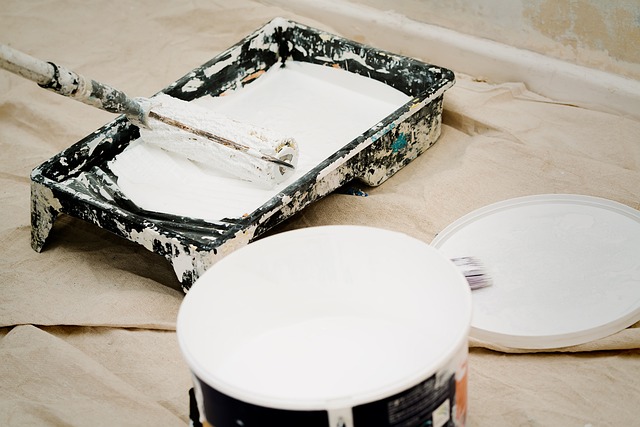Home improvement is important because it enhances the comfort, functionality, and value of your home while addressing necessary repairs and upgrades. Planning a home improvement project can be exciting but also overwhelming. Whether you’re making small upgrades or tackling larger renovations, it’s important to create a plan that fits your budget. Without a proper plan, costs can quickly spiral out of control, leading to unnecessary stress.
Taking the time to map out your project can save you money and help you prioritize the most important tasks. With a clear strategy, you can improve your home without overspending. This way, you’ll get the upgrades you want without compromising on quality.
By focusing on careful planning and sticking to your budget, you can achieve great results. Here are practical steps to help you create a home improvement plan that works for you:
Establish a Realistic Budget
Setting a realistic budget is an important step in any home improvement project. To start, take a close look at your finances to determine how much you can comfortably spend. It’s important to be honest about what you can afford. Overspending can lead to financial strain or unfinished projects. Don’t forget to leave room for unexpected costs, as home improvement projects often encounter surprises. Adding some extra amount to your total budget as a contingency can help you stay prepared for any extra expenses that may come up during the process.
Read more: Why You Should Choose Tex-Cote Contractors For Your Home Improvement Project
Once you’ve established your overall budget, break it down into smaller parts for each aspect of the renovation. For instance, if you’re considering replacement windows, look up the costs for both materials and labor, as prices can vary based on the type of window and installation process. To save money in the long run, consider hiring professional window installation services, such as C. Michael Exteriors, as this can help prevent costly errors and future repairs. They offer high-quality, energy-efficient window replacements tailored to your needs. Their professional team provides custom-fitted windows to ensure enhanced durability and reduced energy costs.
Set Clear Priorities
Another very important thing to consider when planning home improvements is setting clear priorities. Before you start any work, it’s essential to identify what matters most. You might want to focus on areas that improve your day-to-day comfort, increase safety, or add value to your home. For example, you may need to repair structural issues or upgrade outdated systems like plumbing or electricity. These tasks should take priority over aesthetic changes.
Make a list of all the improvements you’re considering, then rank them by importance. This will help you stay focused and prevent unnecessary spending on projects that aren’t as urgent. By having a clear idea of what needs to be done first, you’ll be able to create a plan that is both practical and budget-friendly.
Break the Project into Phases
Breaking your project into manageable phases can make the process easier and more affordable. Instead of trying to complete everything at once, consider spreading the work over several months or even years. This way, you can save up for each phase without feeling overwhelmed by the costs.
For example, you can start with necessary repairs and then move on to smaller upgrades as your budget allows. By taking a phased approach, you’ll avoid stretching your finances too thin and will be able to focus on one task at a time. This strategy also allows you to prioritize the most important improvements while still making progress over time.
Compare Quotes from Contractors
When it comes to hiring contractors, one of the best ways to stick to your budget is by comparing quotes from multiple professionals. When hiring a professional remodeler, get at least three different quotes for the job you need. This allows you to compare not only prices but also the services they offer. Some contractors may provide extra value, such as warranties, better materials, or more experience, which can help you decide which one is the best fit for your project.
Don’t automatically choose the cheapest option. While it may seem like a good idea to save money upfront, it’s important to consider the quality of work and the contractor’s reputation. Sometimes, paying a little more for a qualified, reliable professional can save you money in the long run by avoiding costly repairs or rework. Also, be sure to check references and read reviews to make a more informed decision.
Focus on Energy-Efficient Upgrades
Energy-efficient upgrades are not only good for the environment, but they can also save you money on utility bills over time. These may have a higher upfront cost but can significantly reduce your energy use in the long term.
For example, replacing old fixtures with energy-efficient ones can reduce heat loss during winter and keep your home cooler in summer. This reduces the need for heating and cooling, leading to lower energy bills. Installing energy-efficient appliances, like dishwashers or refrigerators, can also contribute to cost savings. Over time, the amount saved on utilities can offset the initial investment in these upgrades.
Repurpose & Reuse Materials
Repurposing and reusing materials is a great way to save money on your home improvement project. Instead of buying everything new, consider using materials you already have or look for second-hand options. You can find gently used materials at salvage yards, second-hand stores, or even online marketplaces. These items are often available at a fraction of the cost of new materials.
For example, if you’re remodeling your kitchen, consider refinishing your existing cabinets instead of replacing them entirely. You can also reuse tiles, hardware, and other materials from other parts of your home. By repurposing materials, you not only save money but also reduce waste, making your renovation more environmentally friendly.
Monitor & Adjust the Plan
As your home improvement project progresses, it’s important to keep track of your spending and make adjustments when needed. Being flexible with your plan is key to keeping the home renovation project within budget.
If something unexpected happens, like a price increase for materials, adjust your timeline or reprioritize tasks. This way, you can still complete the important improvements without going over budget. Communication with contractors is also essential during this phase to avoid misunderstandings and to ensure the project continues smoothly.
Creating a home improvement plan that fits your budget doesn’t have to be overwhelming. By setting clear priorities, establishing a realistic budget, researching costs, and breaking your project into manageable phases, you can avoid financial stress. With careful planning and a thoughtful approach, you can make meaningful improvements to your home without breaking the bank. By following these steps, you’ll be well on your way to achieving the upgrades you want while sticking to a budget that works for you.

